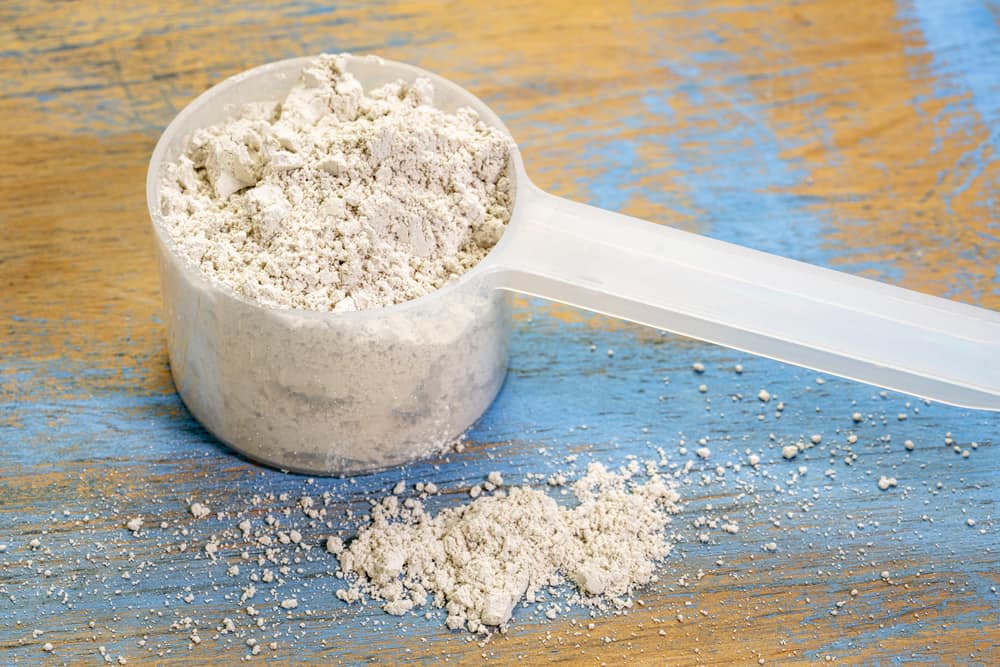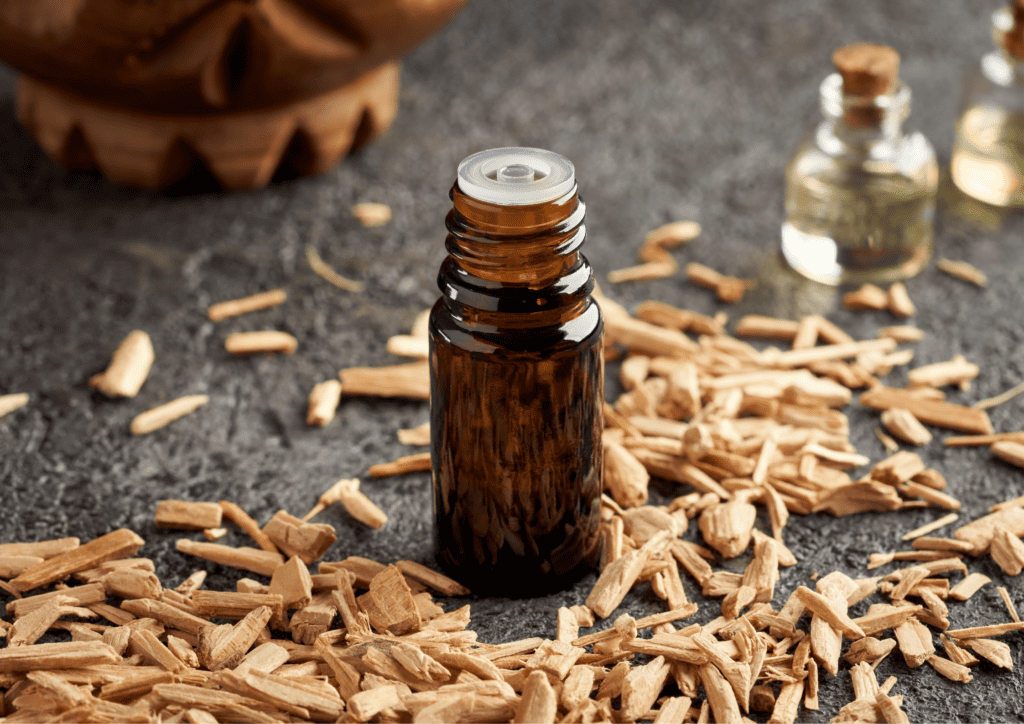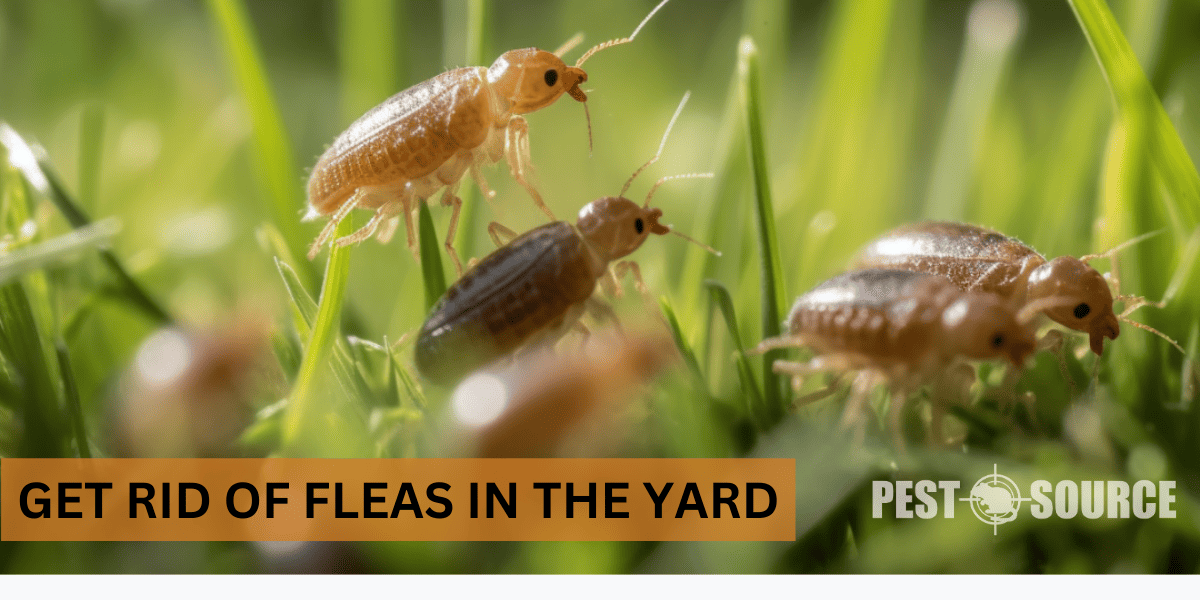If you’ve ever wondered how to get rid of fleas in the yard, you’re in the right place. This comprehensive guide will explore the importance of eliminating these pesky pests from your outdoor spaces and provide a deep dive into understanding their habitats in your yard. We’ll show you how to identify a flea infestation and discuss various treatment methods, ranging from commercial products to home remedies.
To ensure you have all the necessary information, we’ll also cover how to eradicate fleas quickly, the best lawn and garden treatments, and crucial preventive measures for flea control. Lastly, for those dealing with multiple pests, we’ll provide insights into treating your yard for both fleas and ticks. It’s time to reclaim your yard and enjoy your outdoor spaces without worry.
How Does Flea Infestation in the Yard Occur?
Flea infestations in yards typically begin when wild animals like rodents or birds, seeking food or shelter, inadvertently carry fleas into the area. These fleas then thrive in the yard’s warm, moist conditions, especially in shaded or densely grassed areas. Prompt identification and control of these sources are vital to prevent the yard from becoming a breeding ground for fleas.
Sources of Flea Infestation
| Source | Reason for Attraction | Preventive Measures |
|---|---|---|
| Wild Animals | Carrying fleas into the yard | Secure trash, use fencing, and discourage feeding spots |
| Domestic Pets | Returning inside from infested areas | Regular flea treatment and checks |
| Neighboring Yards | Proximity to infested areas can spread to your yard | Work with neighbors for area-wide flea control measures |
| Tall Grass and Weeds | Provides habitat and warmth for fleas | Regular lawn maintenance and trimming |
| Debris and Clutter | Ideal breeding ground for fleas | Remove yard waste and declutter outdoor spaces |
To determine if you have a flea infestation in your yard, look for the following signs:
- Flea dirt: Flea feces, or flea dirt, appears as small, dark specks in your yard or on your pets. This is a telltale sign of a flea infestation.
- Excessive scratching in pets: If your pet is constantly scratching, it could be a sign that fleas are present in your yard.
- Flea bites on humans: Flea bites on humans are small, red, and itchy. They are usually found around the ankles or lower legs, as fleas jump from the ground to feed on their hosts.
How Can You Confirm a Flea Infestation in Your Yard?
To confirm a flea infestation in your yard, you can try the following methods:
- Conduct a visual inspection: Walk around your yard and look for signs of flea dirt or adult fleas jumping in the grass.
- Use a flea comb on your pets: A flea comb can help you detect fleas and flea dirt on your pets’ fur, which indicates a flea infestation in the yard.
- Wear white socks: Walk through your yard with white socks pulled up to your knees. Fleas will be attracted to the warmth and movement and will jump onto the socks, making them easy to spot against the white fabric.
Remember, fleas can be a persistent problem, and it’s essential to take action as soon as you identify an infestation in your yard. By understanding their habitats and knowing the signs of infestation, you can take effective steps to control and prevent these pesky pests from taking over your outdoor space.
Can Fleas Live in Grass?

Yes, fleas can live in grass. They prefer to stay in shaded, moist areas where they can find hosts to feed on. Tall grass provides an ideal environment for fleas to thrive, as it offers both shade and potential hosts such as rodents and other animals.
Besides grass, fleas can also be found in other parts of your yard, including:
- Garden beds: Fleas love the damp soil found in garden beds, as it provides a cool, moist environment for them to reproduce.
- Woodpiles and debris: Fleas can hide and reproduce in the small crevices found in woodpiles and yard debris.
- Pet areas: Fleas are attracted to areas where pets frequently rest or play, such as dog houses or outdoor pet beds.
How Can You Treat Your Yard for Fleas?
Chemical Treatments
One of the most effective ways to treat your yard for fleas is by using chemical treatments. These can include insecticides, such as pyrethroids and carbamates, which target the fleas’ nervous systems and kill them. Make sure to follow the manufacturer’s instructions and apply the treatment to all areas where fleas may be hiding, including grass, shrubs, and mulch.
Natural Treatments
If you prefer a more environmentally friendly approach, consider using natural treatments, such as beneficial nematodes. These microscopic worms attack and kill flea larvae in the soil. You can purchase nematodes at your local garden center, and apply them to your yard following the package instructions.
Insect Growth Regulators (IGRs)
IGRs are a popular choice for killing fleas in the yard because they disrupt the flea life cycle, preventing them from reproducing. Look for products containing active ingredients like methoprene or pyriproxyfen.
Diatomaceous Earth

Diatomaceous earth is a natural, non-toxic powder made from fossilized algae. When fleas come into contact with it, the powder damages their exoskeletons, ultimately killing them. Sprinkle diatomaceous earth around your yard, focusing on areas where fleas are likely to hide.
Home Remedies to Treat Your Yard for Fleas
Dish Soap and Water

A simple mixture of dish soap and water can help eliminate fleas in your yard. Fill a garden sprayer with water and a few tablespoons of dish soap, then spray the solution on your lawn and garden. The soap will help to smother and kill the fleas.
Cedar Chips

Cedar chips are a natural flea repellent, and can be used to treat your yard for fleas. Spread cedar chips around your yard, especially in shaded areas where fleas are more likely to live.
How to Get Rid of Fleas in Your Yard Fast
Combining chemical treatments with preventative measures is the fastest way to get rid of fleas in your yard. Start by applying an insecticide to kill the adult fleas, then follow up with an IGR to prevent new fleas from developing. Additionally, keep your lawn trimmed and clear of debris to make it less hospitable for fleas.
What Kills Fleas in the Yard Instantly?
While no method will kill fleas instantly, using a combination of treatments can help eliminate them quickly. Insecticides, such as those containing pyrethroids, can kill fleas within a few hours of application. For even faster results, consider hiring a professional pest control service to treat your yard.
Can Flea Treatments Be Used in Gardens and Other Outdoor Spaces?
Yes, flea treatments can be used in gardens and other outdoor spaces, but it’s essential to choose products specifically labeled for use on plants and edibles. Some flea treatments may be harmful to beneficial insects and pollinators, so it’s crucial to apply them only to areas where fleas are a problem and avoid using them on flowering plants where bees and other pollinators may be present. Always follow the product label’s instructions for proper application and safety measures.
What Precautions Should You Take When Using Flea Treatments in Your Yard?
When using flea treatments in your yard, it’s essential to take several precautions to ensure the safety of your family, pets, and the environment:
- Read and follow the product label’s instructions and safety guidelines.
- Wear protective clothing and gear, such as gloves, goggles, and a mask, when applying treatments.
- Keep children and pets away from treated areas until the product has dried or as directed by the label.
- Store flea treatments in a secure location, out of reach of children and pets.
- Dispose of empty containers and unused products according to local regulations.
How Can You Prevent a Flea Infestation in Your Yard?
Preventing a flea infestation in your yard involves several steps:
- Keep your lawn well-maintained by mowing regularly and trimming overgrown vegetation.
- Remove debris, such as leaves and grass clippings, which can create a suitable habitat for fleas.
- Discourage wildlife that may carry fleas, like rodents and stray animals, by sealing garbage cans and removing food sources.
- Treat your pets with flea preventatives, like spot-on treatments or oral medications, as recommended by your veterinarian.
To keep fleas out of your yard, consider using natural repellents, like cedar chips, eucalyptus leaves, or plants like lavender and lemongrass. These can be placed around your yard’s perimeter or in areas where your pets spend most of their time. Additionally, maintaining a clean and well-kept yard will make it less attractive to fleas and other pests.
How Can You Treat Your Yard for Fleas and Ticks Simultaneously?
To treat your yard for both fleas and ticks, choose a product that targets both pests, like a combination insecticide containing permethrin or bifenthrin. These treatments can be applied using a hose-end sprayer or a broadcast spreader, covering your entire lawn and any areas where your pets frequently roam. Be sure to follow the product label’s instructions for application rates and safety precautions.
Some effective products for treating both fleas and ticks in your yard include:
- Permethrin-based insecticides: These synthetic chemicals are effective against a wide range of pests, including fleas and ticks. They can be applied as a spray or granules.
- Bifenthrin-based insecticides: Similar to permethrin, bifenthrin is a broad-spectrum insecticide that targets fleas, ticks, and other pests. It is available in liquid and granular forms.
- Natural treatments: Products containing natural ingredients, like cedar oil or diatomaceous earth, can also be effective in controlling fleas and ticks in your yard. However, their effectiveness may be less consistent than synthetic chemicals.
Remember always to follow the manufacturer’s instructions and safety guidelines when using any pest control product in your yard.
How Can You Prevent Fleas From Getting in the House?
Managing a flea infestation brought into the house from the yard involves a multi-pronged approach that includes treating both the indoor and outdoor environments. Start by thoroughly cleaning your home, focusing on areas where pets spend time and the flea hotspots such as carpets, rugs, and upholstery. Use a vacuum with a strong suction to pick up any fleas or eggs.
After cleaning, apply an indoor-safe insecticide or a flea fogger for a more comprehensive treatment. Concurrently, treat the yard using outdoor insecticides or natural alternatives like nematodes, paying close attention to shaded areas where fleas are likely to live. Lastly, ensure your pets are on a vet-approved flea treatment program to break the flea life cycle, preventing re-infestation.



